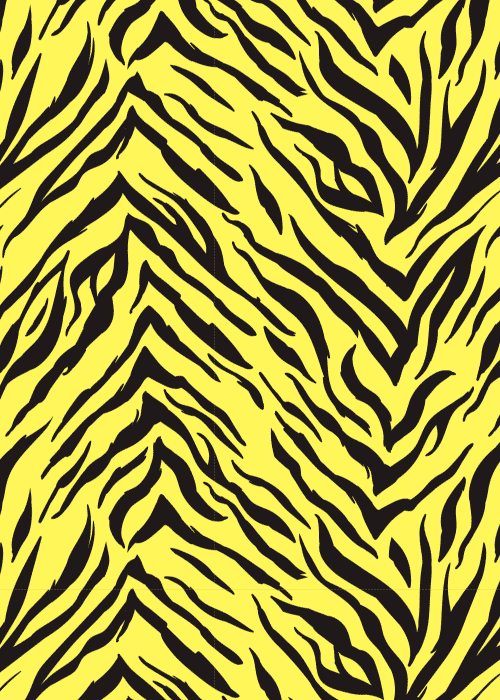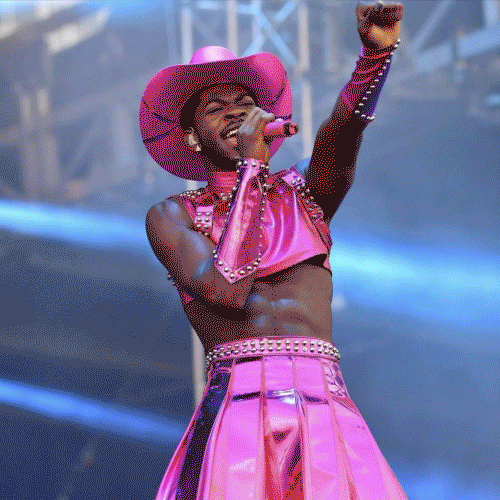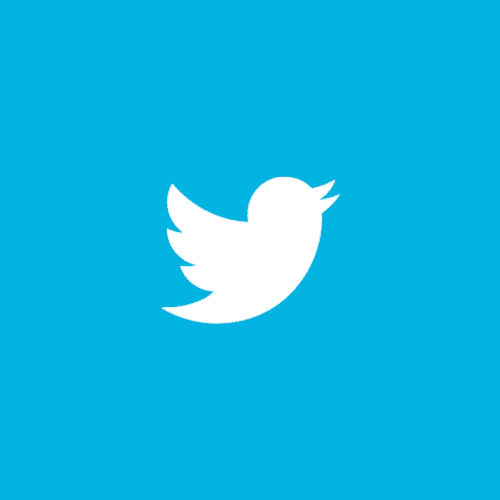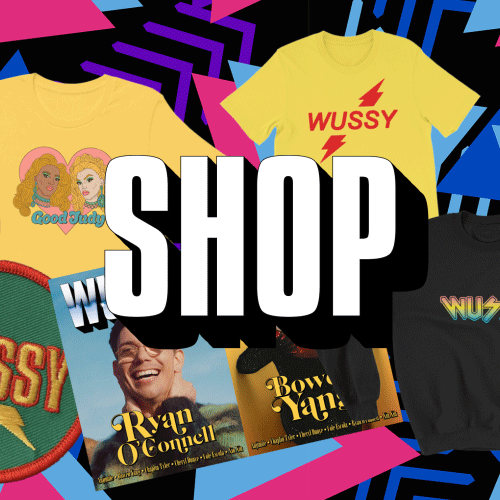We Need More Queer Icons That Are Actually Queer in 2019
The blows came twice in a week. First Into (a site I write for) published, “Amanda Bynes Was My Heterosexual Queer Idol and I’m Glad She’s Back” then I saw a link to “Why princess Diana is an enduring queer icon” via the queer site Them. Both of these articles were written for queer sites by queer writers but were about straight people. I’m not mad at any writer getting a check, and I thought both those article argued their points well. It’s just sad that queer people are still having to turn to heterosexual figures for our idols and icons in 20-gay-teen.
While historically queer people have had to use disidentification to find ourselves in a pop culture landscape where we aren't represented, with today's increasing visibility why do we still find ourselves flocking to straight cultural figures like Ariana Grande? The importance our community continues to place on these (admittedly fabulous) figures shows how repressed we still are and how far there is to go.
In The Rise and Fall of Gay Culture, Daniel Harris suggests that “at the very heart of gay diva worship is not the diva herself but the almost universal homosexual experience of ostracism and insecurity.” We flock to Amanda Bynes, to Britney, To Cher, Barbra, Liza, Judy because we’ve had little to no actual representation in the greater media landscape. Since we don’t see ourselves, we insert ourselves into their narratives. These pop divas and celebrities are talented (sometimes), look great, and are free to express a femininity that many gay men were discouraged to indulge in growing up but found ourselves lusting after anyway. What’s more, these pop culture icons exist in a world with little to no consequences due to their eccentricities. They’re allowed be themselves and thrive for it.
“It was their world, not their femininity, that appealed to me, the irrepressibly madcap in-crowd of Auntie Mame, of high spirits and unconventional ‘characters,’ of nudists and Freudians, symphony conductors and Broadway prima donnas, who lived in a protective enclave that promised immunity from shame and judgment, beckoning me with its broadmindedness and indulgence of sexual eccentricities,” Harris said. Auntie Mame and heterosexual queer icons like her become stand-ins for the lives we wished we could lead. We project our fantasies on to them and look to them for escape.
Queerness, of any kind, is about dreaming of new horizons at its core. We stretch small cultural moments into a canvas big enough to paint our dreams and desires on. We watched Judy Garland sing about a better place over the rainbow and felt a longing for a utopia. We watched She’s The Man and Mulan and dreamed of expressing our gender in ways the world frowned upon.
Straight culture and the figures who define it have noticed the fervor in how we treat these small moments. The spending power of (white, male, cisgender) gay men is now widely accepted. A rapid gay fanbase is a key aspect of any modern female pop star. We give fresh resurgence to child stars like Nick Jonas due to his hotness, and he milked it for all it was worth. A large part of our cultural heritage has been through giving fresh context or loving support to the straight figures we love. As our power has grown, we’ve kept being vocal about the straight people and figures whose existence we’ve collaged to make our own identities.
“We can’t progress until we stop subsisting on what's being given to us and get some actual queer people at the table instead.”
But 2018 is coming to a close and we’ve had a tantalizing taste of how great it is when a queer idol is actually queer. Hayley Kiyoko screamed “20 GAY TEEN” at the VMAs, Troye Sivan made a bop about bottoming, and Kim Petras served the camp popstar glam we normally seek from hetero divas. In the world of TV, Pose broke boundaries by hiring trans people both in front and behind the camera. When a straight actor tried to play the very queer Freddie Mercury, we balked both at the film’s dismissive view on Mercury’s queerness and the fact that none of oodles of already famous white gay men were cast.
Audre Lorde famously said, “The master's tools cannot dismantle the master’s house.” We can’t progress until we stop subsisting on what's being given to us and get some actual queer people at the table instead.
Pop culture moves faster than politics, so we have to actively create the kind of cultural moment that fosters in that political change. Gay marriage progressed rapidly after pop culture shows like Glee and big figures like Lady Gaga started trumpeting the cause. In a 2012 poll by the Hollywood Reporter, 27 respondents said that gay TV characters made them more pro-gay. Not a HUGE number but enough to turn the tide, and think of all the increasing amounts of gay TV since 2012.
We have to start putting our support and star-making abilities behind people who are one of us, not stand-ins for us. Let’s stop putting Nick Jonas on the cover of OUT. Let’s stop writing gushing profiles about how straight male celebrities are brave for moving an inch outside of the heterosexual paradigm. At the end of the day, the Golden Girls aren’t queer. The 12-year-old Amanda Bynes in pants can’t argue for us in the workplace. Let’s start throwing our cultural capital behind people who are actually in our community, not just sympathetic to it.
As problematic as Kim Petras is, at least she’s actually trans. Hayley Kiyoko is truly gay, outwardly so, yet I never hear her bops played in gay bars. She’s actually talking about same-sex attraction! Instead of transposing our romantic desires onto the straight narrative of a Britney Spears song we can revel in a queer romance. The fact that we don’t speak about her or Troye Sivan with the same hushed tones we save for straight divas shows how much homophobia we’ve internalized. We have to support these figures so one day we will have a field of figures to hold to our standards instead of pinning our hopes on a chosen one, or worse: a field of boring straight-acting queer figures.
At some basic level, we aren’t seeing that freedom and escapism in our potential queer idols that we see in heterosexual figures. Maybe it’s because we see the maneuvering fellow queers engage in on their way to fame. Maybe it’s because they’re so busy being made to talk about how important it is for them to be there for visibility that they don’t get to talk about what actually makes it possible for them to permeate our consciousness in the first place: their talents.
While other gay people will continue the long tradition of spinning straight straw into gay gold, we can’t forget to also search the mines for some ourselves. Go to your local drag bar and hand a queen a dollar (or five). Watch and share the new Ssion video. Go see a queer punk band when they roll through your town. Stream “1999” on Spotify (muted, because that song is awful) so Troye Sivan can get some radio airplay. Check out Sir Babygirl, King Princess, Boygenuis, Petal, Suno Deko, and the host of other queer musicians.
We can’t simply keep staring at the horizon of queerness, we have to start walking towards it.
—
Mo Wilson is a writer and sometimes DJ living in Brooklyn. He also throws indie rock/punk shows with the booking collective Booked By Grandma and loves plastic jewelry. You can find him on Twitter @sadgayfriendx and Instagram at @djgaypanic
Archive
- September 2025
- August 2025
- May 2025
- February 2025
- November 2024
- October 2024
- September 2024
- August 2024
- July 2024
- June 2024
- May 2024
- April 2024
- October 2023
- July 2023
- June 2023
- May 2023
- April 2023
- March 2023
- February 2023
- June 2022
- April 2022
- March 2022
- January 2022
- December 2021
- October 2021
- September 2021
- August 2021
- July 2021
- June 2021
- May 2021
- April 2021
- March 2021
- February 2021
- January 2021
- December 2020
- October 2020
- September 2020
- August 2020
- July 2020
- June 2020
- May 2020
- April 2020
- March 2020
- February 2020
- January 2020
- December 2019
- November 2019
- October 2019
- September 2019
- August 2019
- July 2019
- June 2019
- May 2019
- April 2019
- March 2019
- February 2019
- January 2019
- December 2018
- November 2018
- October 2018
- September 2018
- August 2018
- July 2018
- June 2018
- May 2018
- April 2018
- March 2018
- February 2018
- January 2018
- December 2017
- November 2017
- October 2017
- September 2017
- August 2017
- July 2017
- June 2017
- May 2017
- April 2017
- March 2017
- February 2017
- January 2017
- December 2015
- November 2015
- October 2015
- September 2015
- August 2015
- July 2015
- June 2015
- May 2015
- April 2015









